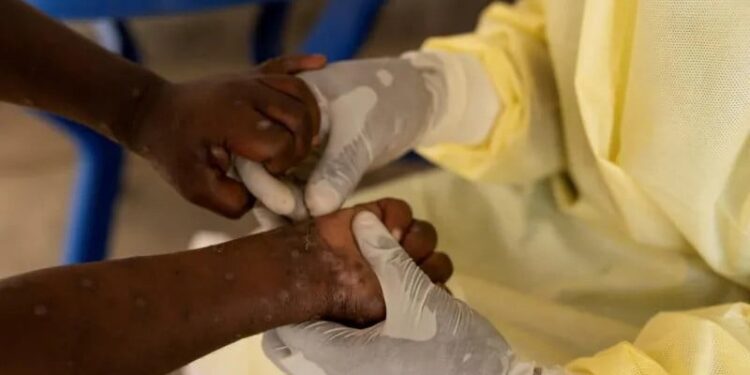The 2024 mpox outbreak has taken a significant turn as cases emerge beyond the African continent. On August 17, 2024, Pakistan confirmed its first mpox case, closely followed by Sweden reporting its initial infection on August 16. These developments mark a critical juncture in the global spread of the virus, prompting health organizations worldwide to heighten their alert levels. As the outbreak evolves, understanding its progression, symptoms, and prevention methods becomes increasingly vital for public health and safety.
The Spread of Mpox in 2024
The mpox virus, a relative of smallpox, has been causing concern since its resurgence in African countries in 2022. The Democratic Republic of Congo (DRC) has been at the epicenter of this outbreak, declaring an epidemic in December 2022. By June 2024, the DRC was grappling with the largest mpox outbreak ever recorded, with tens of thousands of infected individuals.
The Africa CDC reports that mpox has now been detected in at least 13 African countries. Compared to the same period in the previous year, cases have surged by 160%, with a 19% increase in fatalities. This rapid spread within Africa set the stage for the virus’s expansion to other continents.
The confirmation of cases in Pakistan and Sweden represents a significant development in the 2024 mpox outbreak. Pakistan’s first case was reported in an individual who had traveled from Saudi Arabia, while Sweden’s case involved the clade 1 strain, known for its higher transmission rate and potential for severe infections. These cases have prompted the European Center for Disease Prevention and Control (CDC) to elevate its risk alert level from “low” to “moderate,” urging countries to maintain high vigilance, especially for travelers from affected areas.
2024 Mpox Outbreak: Symptoms and Transmission
Mpox primarily affects humans and animals, causing symptoms similar to but milder than smallpox. The virus enters the human body through broken skin, airways, or mucous membranes. Once infected, individuals may experience:
1. Flu-like symptoms: Fever, chills, and body aches are common initial signs.
2. Skin lesions: Pus-filled lesions develop on the skin, which can be few (5-25) or numerous (hundreds) in severe cases.
3. Varying severity: While most cases are mild, severe illness can occur, particularly in children, individuals with untreated HIV, or those with weakened immune systems.
The virus spreads through close contact with infected persons or animals. Human-to-human transmission occurs primarily through skin-to-skin contact, especially with skin lesions. The virus can remain detectable on skin lesions for about three weeks. Contaminated objects like bedding, clothing, and surfaces can also facilitate transmission.
Prevention and Treatment Strategies
As the 2024 mpox outbreak continues to evolve, prevention becomes crucial. Here are key measures to protect yourself and others:
1. Practice good hygiene: Regular handwashing is essential.
2. Avoid close contact: Minimize skin-to-skin contact with infected individuals.
3. Seek medical attention: If symptoms appear, consult healthcare providers promptly.
4. Vaccination: In countries where available, mpox vaccines can effectively reduce risk.
5. Stay informed: Keep up-to-date with local health advisories, especially when traveling.
Currently, there is no specific treatment for mpox. However, antiviral drugs are being tested for efficacy. The focus remains on vaccination as a preventive measure. Unfortunately, access to vaccines varies significantly, with many African nations facing shortages. The Africa CDC has obtained 280,000 doses through donations, but this is insufficient to meet the demand in affected areas.
The 2024 mpox outbreak has reached a critical phase with its spread to Pakistan and Sweden. While these cases outside Africa are concerning, the primary focus for controlling the epidemic remains in central Africa, where resources are limited. The global health community must work together to address this outbreak, ensuring equitable access to vaccines and treatments. As we navigate this health challenge, individual responsibility in practicing preventive measures remains crucial. By staying informed and following public health guidelines, we can collectively work to mitigate the impact of the 2024 mpox outbreak and protect vulnerable populations worldwide.
Related News
















